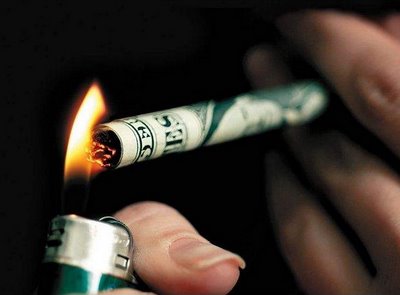In the August 2010 issue of Tobacco Control, Cynthia Callard wrote an enlightening article on just how uneven the playing field is in tobacco control. She compared the 2008 total revenues of the five major tobacco companies that control 90% of the global market as compared to the total amount spent on global tobacco control. The results show just how much the deck is stacked against effective tobacco control, especially in low and middle income countries. The revenues of these five companies exceeded $300 billion ($160 billion of that is provided to governments as tax) and the corporate earnings of the four publicly traded companies were over $25 billion, of which $14 billion was retained after corporate income taxes were paid. In comparison, funding for global tobacco control was a paltry $240 million. That would be less than 2% of the retained earnings of the four public companies alone.
the five major tobacco companies that control 90% of the global market as compared to the total amount spent on global tobacco control. The results show just how much the deck is stacked against effective tobacco control, especially in low and middle income countries. The revenues of these five companies exceeded $300 billion ($160 billion of that is provided to governments as tax) and the corporate earnings of the four publicly traded companies were over $25 billion, of which $14 billion was retained after corporate income taxes were paid. In comparison, funding for global tobacco control was a paltry $240 million. That would be less than 2% of the retained earnings of the four public companies alone.
Considering the profitability of the devastating global tobacco death toll – to say this seems unjust is a gross understatement. What is even more nauseating, is that these profits are coming from some of the poorest people in the poorest nations in the world and ending up in the pockets of wealthy stockholders in the richest countries.
In her article, Callard proposes innovative solutions to divert some of this money to tobacco control
- :use of transaction taxes on the flow of profits from countries where multinational tobacco companies sell cigarettes to countries where theydistribute the profits or other fiscal instruments
- health promotion surtax on tobacco manufacturers’ earnings or ringfenced taxes on consumption of tobacco products
- develop guidelines under the auspices of the FCTC to mandate the use of profit taxes to raise funds for national and international tobacco control efforts
What do you think? How can we increase funding for global tobacco control? Should we push for a “polluter pays” system? What other innovative models could be adopted?